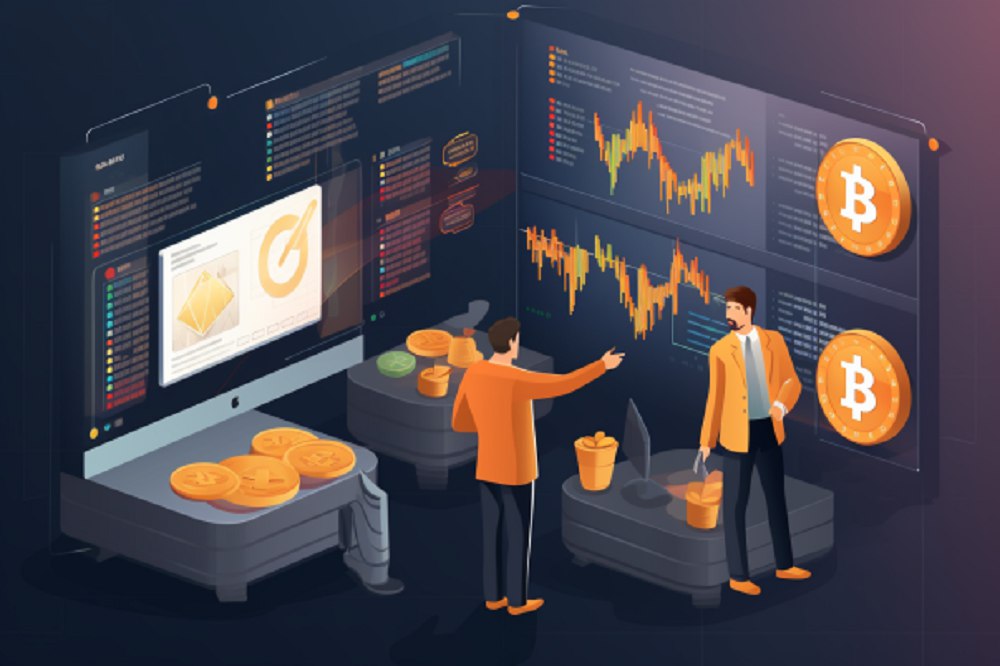The interplay between market makers and market takers in cryptocurrency trading shapes the market’s liquidity, volatility, and fee structures. Hence, an excellent understanding of their roles is essential for any participant in the crypto space.
This guide overviews the role of market makers and takers in crypto trading, including a clear distinction between the two.
An Overview Of Crypto Liquidity
Liquidity denotes the ease with which a specific digital asset can be bought or sold in the market without significantly impacting its price. It is a vital metric that influences market dynamics, risk management, and trading strategies.
Factors Influencing Cryptocurrency Liquidity
Cryptocurrency liquidity, a crucial aspect of digital asset trading, is influenced by various factors. One of them is the number of exchanges where liquidity can fluctuate, with major platforms boasting extensive user bases and providing heightened liquidity.
Additionally, trading volume is a fundamental contributor to liquidity, as higher trading volumes contribute to increased market fluidity. The popularity and widespread adoption of specific cryptocurrencies, like Bitcoin or Ethereum, typically coincide with elevated liquidity levels.
Moreover, market depth, represented by the order book’s depth showcasing buy and sell orders at different price levels, is another critical factor. Deeper order books generally correlate with heightened liquidity in the cryptocurrency market.
Market Makers And Market Takers: Roles And Distinctions
Market Makers
Market makers create a two-sided market by placing both buy and sell orders. They use limit orders to specify their desired buying or selling price. These orders are added to the order book in anticipation of future trades.
For example, a market maker may place a buy order for 4 BTC at $48,000, committing to purchase if the market reaches that specified price.
Market Takers
In contrast, market takers execute trades by accepting existing buy or sell orders. They take advantage of the liquidity provided by market makers. Market takers submit orders, prioritizing immediate execution at the current market price.
These orders match with existing orders on the order book. For instance, a market taker can submit a market order to buy 2 BTC at $48,100 and immediately execute the trade by matching a market maker’s sell order.
Typically, market makers enjoy reduced fees as an incentive for their role in supplying liquidity to the market. Conversely, market takers face slightly higher fees because their actions impact liquidity.
Risks And Challenges For Market Makers
Both market makers and market takers encounter certain risks and challenges in the dynamics of the crypto market. Understanding these intricacies is crucial for participants seeking to navigate the complexities of the cryptocurrency market.
Market Volatility
Market makers are exposed to the inherent volatility of the cryptocurrency market. Sudden and significant price fluctuations can lead to unexpected losses. Effective risk management amidst volatile market conditions is a constant challenge for market makers. Therefore, quick adjustments to strategies and risk protocols are vital.
Rapid Changes in Market Conditions
A sudden surge or drop in prices may impact existing positions and profitability. Adapting swiftly to changing market conditions requires a proactive approach. Continuous monitoring and real-time adjustments become imperative.
Execution Risks
Execution risks arise when market makers face challenges in fulfilling orders promptly. Delays or inefficiencies in executing trades can impact overall profitability.
Streamlining execution processes and optimizing order fulfillment mechanisms are ongoing challenges. Thus, technological advancements and automation can be a vital solution.
Counterparty Risks
Engaging with different counterparties introduces counterparty risks. Default by a counterparty can result in financial losses for market makers.
Thus, due diligence in selecting counterparties and implementing risk mitigation strategies is essential. Diversification of counterparties can also help spread risk.
Risks And Challenges For Market Takers
Immediate Execution Risks
Immediate execution exposes market takers to risks like slippage or executing orders at less favorable prices, particularly in low-liquidity markets. Hence, implementing strategies to minimize slippage and optimizing order execution becomes paramount.
Impact on Short-Term Price Movements
Market takers can influence short-term price movements with their trades, especially in low-liquidity markets. Therefore, mitigating the impact on prices and avoiding adverse effects on trade execution requires strategic planning.
This solution involves understanding the market environment and adjusting trade sizes accordingly.
Market Liquidity Fluctuations
Market takers are susceptible to fluctuations in market liquidity. Low liquidity can result in challenges in executing large orders at desired prices. Solutions include identifying opportune times for trade execution. Also, flexibility in trading plans is crucial.
External Market Influences
External factors like sudden news events can impact market takers’ trades. Thus, staying informed about external factors, implementing risk mitigation strategies, and adapting to unforeseen events are essential. Robust risk management protocols are imperative.
Ultimately, both market makers and market takers play indispensable roles in cryptocurrency. Their delicate balance contributes to the market’s overall health and efficiency.
